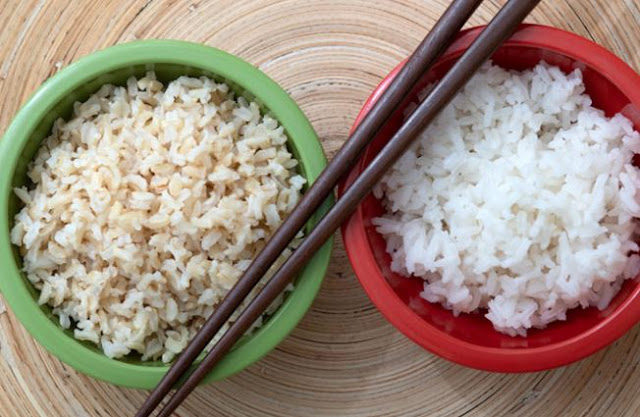Which is healthier: brown rice or white rice? A nutritional tale of the tape provides a transparent winner by knockout. “Hands down, brown rice brings more to the table,” says dietitian Beth Czerwony, MS, RD, CSOWM, LD.
But rice won't always be your most suitable option counting on some personal health factors. (Nothing is ever 100%, right?)
So let’s break it down with Czerwony during a little Rice 101.
Why rice may be a big dietary deal
Approximately 20% of the world’s calorie intake is connected to the standard rice grain, making it one of the foremost important foods on the earth. quite 3.5 billion people believe rice is a daily staple of their diet.
To feed that requirement, farmers grow quite 100,000 different sorts of rice during a rainbow of colors. Thankfully, though, your mealtime choice typically gets narrowed right down to a pair of options: brown or white.
Out of the 2, polished white rice is the way and away the foremost common to seek out on your plate – largely thanks to simple cooking, an extended pantry time period, and a neutral flavor profile that meshes well with other ingredients.
Differences between brown rice and polished rice
Whole grains like rice are often weakened into three main parts – the germ, bran, and endosperm. Each component packs different minerals, vitamins, and proteins that provide you varying nutritional value.
Brown rice contains all three parts, making it an entire grain. White rice? Not such a lot, says Czerwony. Processing strips polished white rice of the germ and bran, leaving the starchy (and least nutritious) endosperm center.
Manufacturers do enrich polished white rice to exchange a number of what’s lost during processing. “Basically, they strip it down and check out to redress it,” explains Czerwony. “But the ultimate product still falls in need of the nutritional level where it began.”
Benefits of brown rice
Don’t let the tiny size of a grain of rice fool you. Inside that tiny husk resides nutrients with the facility to scale back your cholesterol levels and lower your risk of heart condition, stroke, and diabetes.
Brown rice outpaces polished white rice in:
- Dietary fiber.
- Manganese.
- Magnesium.
- Niacin.
- Phosphorous.
- Vitamins B1 (thiamin) and B6 (pyridoxine).
It’s a posh carbohydrate, too, which may assist you to manage your cholesterol and reduce. “Brown rice also will keep you feeling full longer, which helps when you’re watching what proportion you eat,” says Czerwony.
There is one negative on the ledger for brown rice: arsenic. Brown rice contains elevated levels of the present toxic element, which is present in many foods. It’s not enough to cause harm during a typical diet. Women who are pregnant, however, might want to limit consumption.
Is polished white rice bad for you?
The short answer is no… a minimum of when eaten carefully. “Is it the simplest food for you? No,” says Czerwony. “But it’s not getting to hurt you.”
Enriched polished white rice is an honest source of vitamin Bc, which is suggested for pregnant women to assist with the prenatal development of their children. It’s also recommended for mothers who breastfeed. (Arsenic isn't as present in polished white rice after processing.)
White rice also could also be preferable if you’re on a low-fiber diet or have a sensitive stomach.
But it’s not hard to seek out criticism of polished white rice – particularly regarding how it can make your blood glucose levels spike. Some researchers even equate a serving of polished rice to eating pure table sugar.
Additionally, research shows that a diet heavy in polished white rice could increase your risk of developing diabetes. (Whole grain brown rice has the other effect.)
Get creative with your menu
If you only can’t decide between brown rice and polished white rice, pick them both. Czerwony says she often advises people to combine the varieties. Cooking times vary for brown rice and polished white rice, which can require some in-the-kitchen adjustments.
She also encourages people to explore potential rice substitutes, like quinoa, barley, and ancient grains. These can also be blended with rice or served on their own. Countless recipes are often found online.
“It’s important to understand there’s not only one option or an easy choice between brown rice and polished white rice,” says Czerwony. “Take advantage of the variability.”
And that, she says, could also be the healthiest choice of all.
Tags:
Nutrition

